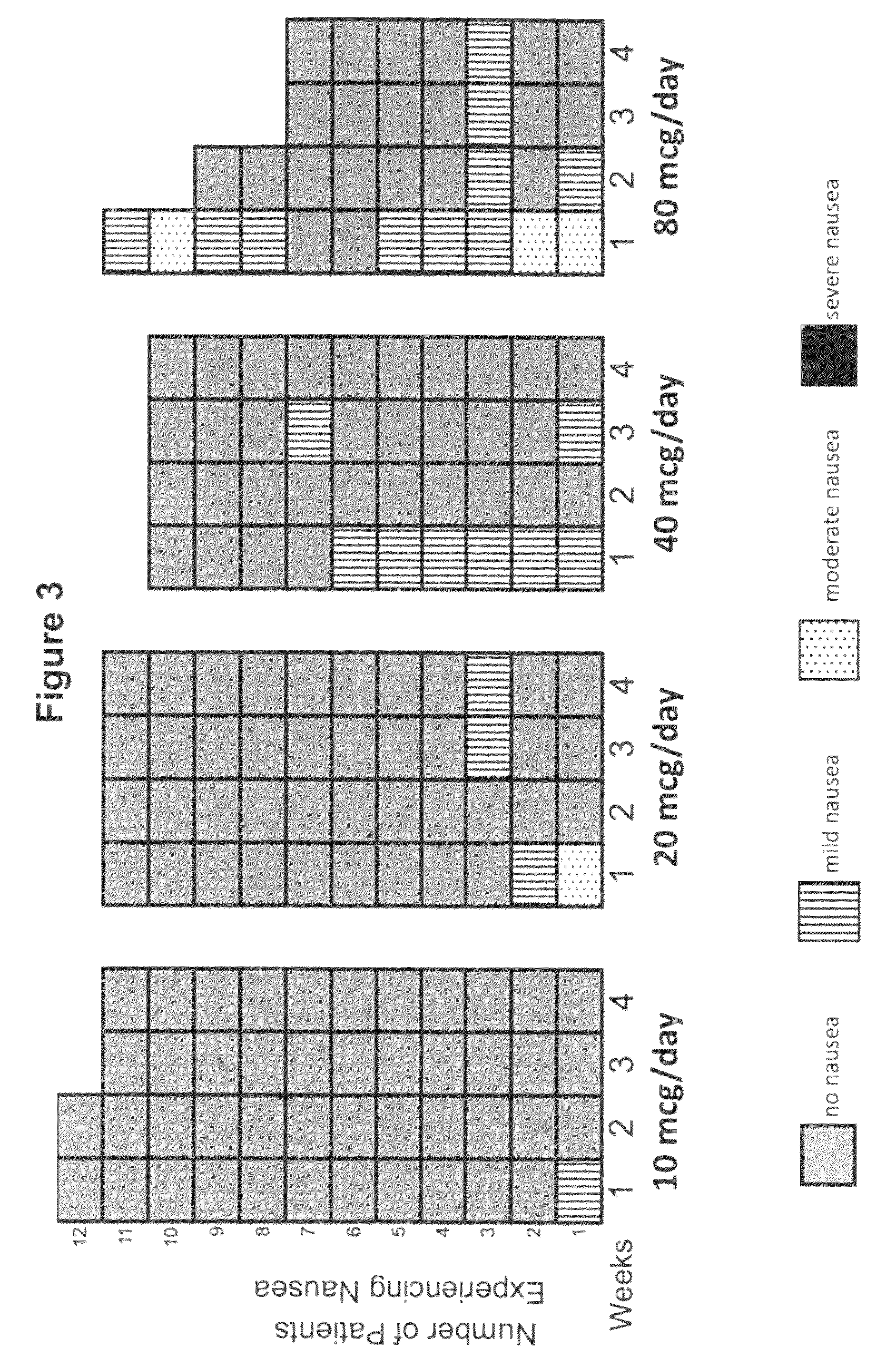Rapid establishment and/or termination of substantial steady-state drug delivery
a steady-state drug and rapid establishment technology, applied in the field of organic chemistry, formulation chemistry, and peptide chemistry, can solve the problems of increased infection risk, difficult administration of intravenous injections, and limitations of oral administration, and achieve the effect of reducing fasting plasma glucos
- Summary
- Abstract
- Description
- Claims
- Application Information
AI Technical Summary
Benefits of technology
Problems solved by technology
Method used
Image
Examples
example 1
Description of a Typical Osmotic Delivery Device
[0201]Suspension formulations comprising exenatide particles suspended in solvent / polymer vehicles were developed for the treatment of type 2 diabetes mellitus. Suspension formulations were loaded into a DUROS® device for subcutaneous implantation to deliver exenatide at a continuous and consistent rate.
[0202]FIG. 4 depicts an example of a DUROS® delivery system useful in the practice of the present invention. In FIG. 4, the osmotic delivery device 10 is shown comprising a reservoir 12. A piston assembly 14 is positioned in the lumen of the reservoir and divides the lumen into two chambers. In this example, the chamber 16 contains a beneficial agent formulation and the chamber 20 contains an osmotic agent formulation. A semi-permeable membrane 18 is positioned at a first distal end of the reservoir, adjacent the chamber 20 containing the osmotic agent formulation. A diffusion moderator 22 is positioned in mating relationship at a secon...
example 2
Phase 1b Clinical Trial Data for Continuous Delivery of Exenatide
[0208]A Phase 1b clinical trial was designed as a multi-center, randomized, open-label study with three sites and a total of 44 subjects. The Phase 1b clinical trial was designed and conducted to evaluate the safety and tolerability of continuous subcutaneous delivery of unmodified, synthetic exenatide having the amino acid sequence of exendin-4 via DUROS® delivery devices (ITCA 650) in subjects with inadequately controlled type 2 diabetes mellitus. In this study, osmotic delivery devices were implanted subcutaneously in the abdominal area under the abdominal skin.
[0209]In the study, subjects were randomized to receive doses of 10 mcg / day, 20 mcg / day, 40 mcg / day, or 80 mcg / day of ITCA 650. There were 10-12 subjects per group for each of four dose groups. Treatment was for 28 days with a 7-day follow-up period. Thus, this was a 29-day study that corresponded to a total of 28 days of treatment.
[0210]A. Demographics of St...
example 3
Phase 2 Clinical Trial Data for Continuous Delivery of Exenatide
[0234]A Phase 2 clinical trial was designed as a multi-center randomized, open-label study with 50 sites and a total of 155 subjects. The Phase 2 study was designed and conducted to compare the efficacy, safety and tolerability of treatment with continuous subcutaneous delivery of unmodified, synthetic exenatide having the amino acid sequence of exendin-4 via DUROS® delivery devices (ITCA 650) versus twice-daily injections of unmodified, synthetic exenatide having the amino acid sequence of exendin-4 in subjects with inadequately controlled, metformin-treated type 2 diabetes mellitus. In the study, subjects were initially randomized to receive either 20 or 40 mcg / day of ITCA 650 for 12 weeks or twice-daily (BID) exenatide injections at 5 mcg BID for 4 weeks followed by 10 mcg BID for 8 weeks. Subsequently, subjects were randomized to receive 20, 40, 60 or 80 mcg / day of ITCA 650 for an additional 12 weeks. In this study,...
PUM
| Property | Measurement | Unit |
|---|---|---|
| diameter | aaaaa | aaaaa |
| viscosity | aaaaa | aaaaa |
| viscosity | aaaaa | aaaaa |
Abstract
Description
Claims
Application Information
 Login to View More
Login to View More - R&D
- Intellectual Property
- Life Sciences
- Materials
- Tech Scout
- Unparalleled Data Quality
- Higher Quality Content
- 60% Fewer Hallucinations
Browse by: Latest US Patents, China's latest patents, Technical Efficacy Thesaurus, Application Domain, Technology Topic, Popular Technical Reports.
© 2025 PatSnap. All rights reserved.Legal|Privacy policy|Modern Slavery Act Transparency Statement|Sitemap|About US| Contact US: help@patsnap.com



